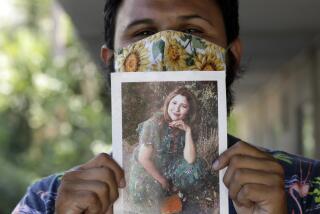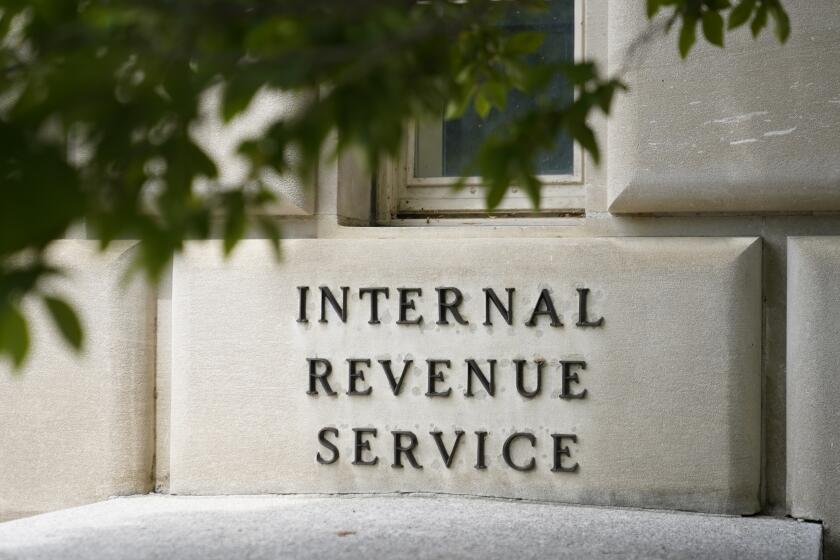The O.J. Economy: Trial’s Benefits May Offset Cost
- Share via
Groans of economic pain were heard when Judge Lance Ito indicated recently that the trial of O.J. Simpson could last another six months. Los Angeles County already has borne more than $2.5 million in costs of the trial and faces millions more as the proceedings drag on.
County supervisors, understandably frustrated in a time of tight budgets, are complaining and looking around for someone to share the costs--such as the television companies that are scoring high and profitable ratings from the spectacle.
Cost-sharing efforts so far are narrowly focused. Supervisor Mike Antonovich has asked Judge Ito to make sure extra costs stemming from the trial being televised, such as increased security for the jury, be billed to the TV companies. The stations already are paying for special wiring and other modifications to the courtroom.
But broader rhetorical suggestions that the TV stations’ profits--which are already subject to taxation--be further tapped to offset trial costs are not soundly based. “The public should never question whether a famous individual is charged just because he would generate good ratings,” Supervisor Zev Yaroslavsky said.
And such ideas also ignore the many benefits the O.J. trial brings to the Los Angeles economy, from hotel occupancy to TV equipment rentals and technician employment to the millions of dollars’ worth of TV revenues, future tourism and unpredictable business that flows from Los Angeles’ place as a spectacle city at this time in history.
The O.J. trial, in fact, can stand as an object lesson in how economic value can billow seemingly out of nowhere in the Information Age.
But to understand all that, it’s best to examine costs and benefits as concretely as we can. In comparison to the county’s costs to pay for prosecutors, judge, court personnel and police--which are monitored by county auditor Rick Vandenberg--benefits tend to be dispersed and less easy to measure.
The New Otani Hotel has up to 55 guests more than usual these days because out-of-town media stay there. “Before the trial began, we wrote to news editors--who sign the expense accounts--to tell them about our special packages for media guests,” says Deborah Stacey, sales director of the New Otani.
Occupancy is also up at the Intercontinental and other Downtown hotels. Phillipe’s restaurant has a standing takeout order to feed 30 or 40 people in the NBC News and CNN trailers at O.J. City.
And the 25 trailers on the Hall of Justice parking lot are leased--at $600 a month and up--from GE Capital Mobile Space, an Irwindale-based unit of General Electric. The TV people also pay the county $24,000 a month to rent the parking lot.
If the fees broadcasters pay local celebrity lawyers are added into the mix, the local private-sector economy may be taking in more than the public sector is spending.
But even those benefits are chicken feed compared to the broadcast revenues generated for Court TV, which has its camera in the courtroom, CNN, Fox and all the other networks and local stations.
The O.J. trial will definitely swell the profits of privately held American Lawyer Media, owner of Court TV; of Turner Broadcasting, owner of CNN, and of News Corp., owner of Fox. Simply put, the trial is much cheaper and more profitable to put on than a drama or sitcom with paid actors and writers.
Still, as those profits are earned in California, so they may be taxed in California.
A more useful exercise for understanding the local economy is to ask from what source those dollars arise. The answer is from the mysterious process by which the trial of O.J. Simpson, on murder charges, has become yet another story of American culture.
Viewers worldwide are fascinated by more than the question of O.J.’s ultimate conviction or acquittal. One big story is the doughty prosecutor Marcia Clark, a woman struggling to keep her children and fight an epic legal battle against big-time lawyers far better paid than she.
Another is the skillful Johnnie L. Cochran Jr., the African American lawyer who is acknowledged to be the smartest person in the courtroom, as he demonstrates a mastery of the law in the attempt to win acquittal for his client.
On one level, viewers are getting a primer on the American legal system and on another a crackling-good soap opera.
In short, the trial has become what Los Angeles sells to the world, and that is American culture. “America is social innovation; that is what the world wants to see,” says Sheridan Tatsuno, head of NeoConcepts, a high-tech industry consultancy in Santa Cruz. He was referring to the working out of American democracy, between woman and man, racial and ethnic groups, young and old.
Those are the stories of steamy intrigue and stylish living, ambition and destruction in Los Angeles and all of Southern California--the fascinating region of celebrities and swimming pools, earthquakes, fires and floods--that keep people watching and sponsors spending millions. Thus riches still are created out of the fight for love and glory.
The world has watched Los Angeles for visions of abundance, from Gidget to Lucy. “When Lucy opened the refrigerator door,” one British woman said of the 1950s sitcom, “we noticed that the refrigerator was always full.”
And it has watched for passion and intrigue. That is why “Santa Barbara” is a hit on television in Spain today and why the O.J. trial has become a global phenomenon.
The tourists have already begun to come. Graveline Tours and others have put O.J. sites--the Brentwood home, the courthouse, Mezzaluna restaurant--on their itineraries.
Other business, other consequences will follow. The O.J. economy, oddly unlike the trial itself, shows no sign of slowing down.
More to Read
Inside the business of entertainment
The Wide Shot brings you news, analysis and insights on everything from streaming wars to production — and what it all means for the future.
You may occasionally receive promotional content from the Los Angeles Times.










